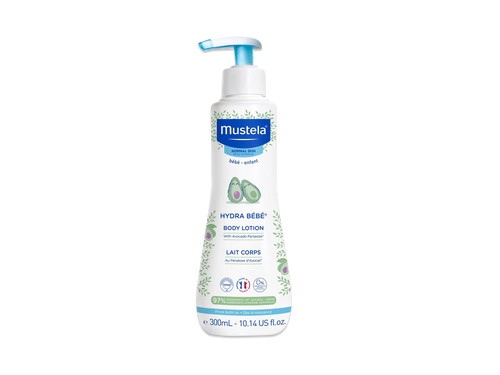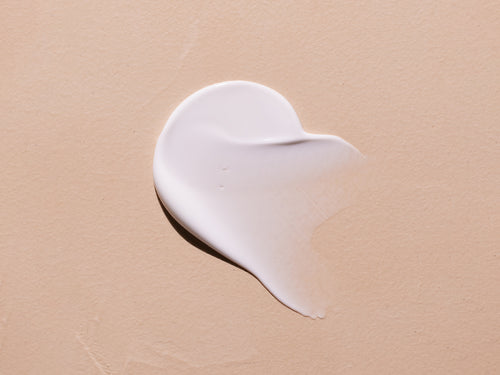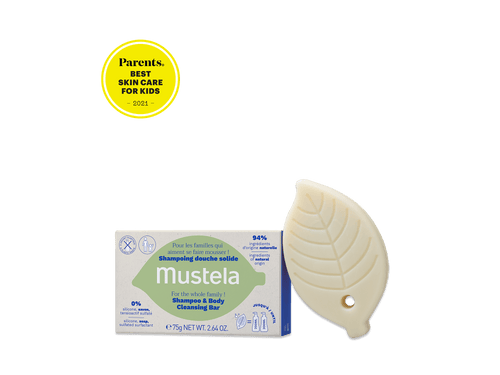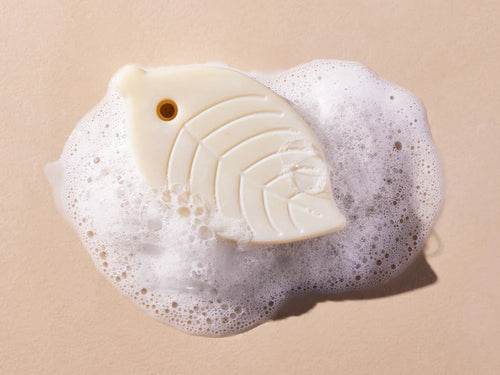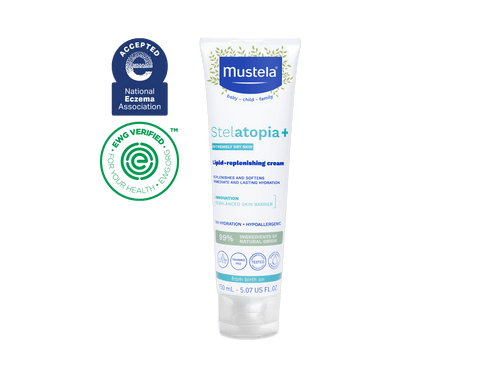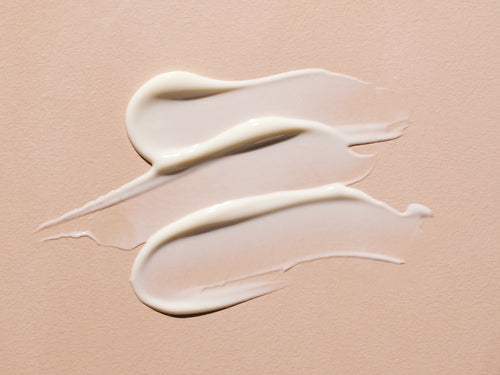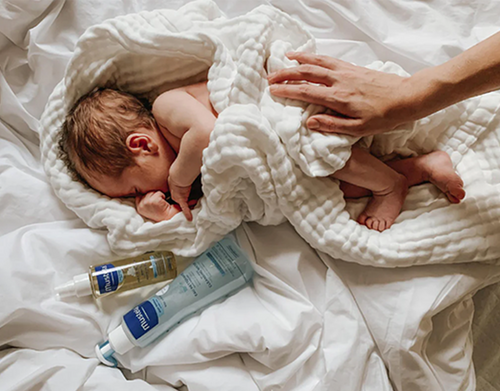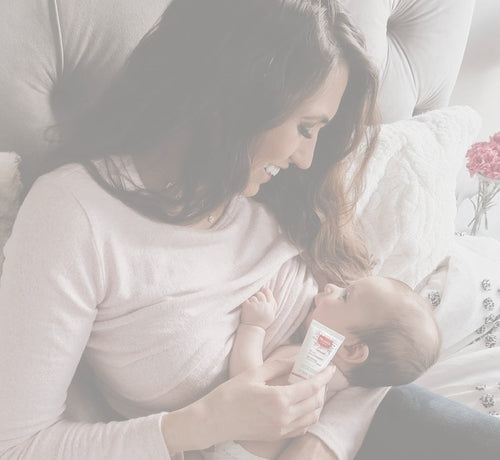Caring for your brand new baby can be both exciting and confusing, especially when it comes to keeping their tiny body clean. How often should you bathe a newborn? And how can you keep them clean in between baths? These are good questions.
In this article, we’ll start by discussing how often to bathe your little one. Then, we’ll go over a few ways to prevent dry baby skin when it’s time to put them in the tub.
Let’s start with the big question: How often should you bathe a newborn?
How Often Should You Bathe A Newborn?

Between spit-up, drool, and blowouts, it might seem like your little one constantly needs cleaning up. But when you stop to think about it, newborns don’t sweat much or end up grimy from playing outside. Other than their bodily functions, they don’t really get dirty.
So, how often should you bathe a newborn to keep them clean? As long as you’re cleaning their spit-up, drool, and diaper area on a daily basis, we recommend a bath two to three times a week.
Whether you’re still giving sponge baths or have moved on to sink (or baby tub) baths, this frequency is enough to keep your baby clean.
Baby’s very first bath shouldn’t occur until 24 hours after birth. Holding off helps prevent a drop in their blood sugar and body temperature, avoids drying out their skin, and gives more time for bonding and breastfeeding.
Once your baby clears the first day, they’re good to go with their two to three baths a week.
You might wonder: what’s the big deal about giving a baby more baths? What if you want to make a bath part of your bedtime routine?
One big reason it’s not recommended to hit the tub daily is that when you bathe your baby too often, they’re more likely to develop dry skin. This is because baby skin is thinner than adult skin, leaving it prone to dryness and irritation.
In order to keep your baby’s delicate skin hydrated and healthy, it’s best to combine limited bathing with wipe-downs in-between baths, especially on their face and diaper area.
Now that we know the frequency of bathing, let’s discuss how you can prevent dry skin and make bathtime work for — not against — your baby’s skin!
Preventing Dry Skin

Since bathing your baby has the potential to dry out their skin, it’s important to keep the following factors in mind when they splish-splash in the bath.
Keep Baths Short And Sweet
As your baby grows, bath time might turn into fun playtime that just can’t be cut short! However, for now, keep baths short and sweet. The longer your baby is in the bath, the more their skin can become dry.
All you need is five or 10 minutes to get them clean!
Check The Water Temperature
Another key to a safe bath that won’t dry your baby’s skin: Keep the bathwater warm, not hot. Hot water can strip the moisture from their skin. And if the water is too hot, it’s simply not safe.
If you have a bath thermometer, check that the water temperature is around 97°F.
Use Gentle Products

Now, turn your attention to the bathtime products you use. Products that contain harsh ingredients can irritate and dry your baby’s skin. And that’s not to mention that some ingredients can be just plain bad for their health.
When it comes to questionable ingredients to avoid, stay away from synthetic fragrances, phenoxyethanol, parabens, and sulfates. Instead, choose gentle products that are designed specifically for baby skin and made with natural ingredients.
What do we mean by “natural ingredients?” Ingredients that come straight from nature. Here are a few to look for:
- Aloe vera
- Avocado
- Avocado oil
- Avocado perseose
- Beeswax
- Jojoba oil
- Olive oil
- Shea butter
- Calendula
Read more about these ingredients here.
One product filled with good-for-you ingredients is our hypoallergenic Foam Shampoo For Newborns — formulated with 99% naturally derived ingredients and free of fragrance, parabens, phthalates, and phenoxyethanol.
This shampoo treats your baby’s skin to avocado polyphenols, a patented ingredient of natural origin that helps protect and hydrate your baby’s delicate scalp, and sunflower seed oil to replenish and restore the skin barrier and prevent cradle cap from recurring.
It’s made to cleanse your baby's hair and scalp while minimizing cradle cap flakes. Plus, it’s biodegradable. Safe for your newborn and the environment!
For organic bathtime options, check out our certified organic line here.
Apply Baby Lotion

Ward off the drying effects of bath time by applying baby lotion after drying your baby but while their skin is still damp. Keep in mind that the same rule applies here: Use a gentle lotion that’s made with baby skin in mind.
Our best-selling Hydra Bebe Lotion contains jojoba oil, sunflower oil, and our signature avocado perseose and is specially formulated to minimize the risk of allergic reactions. Use it along with Hydra Bebe Facial Cream for complete, all-over moisturization.
Or, opt for a lotion that’s perfect for the whole family, such as Certified Organic Hydrating Cream with Olive Oil and Aloe.
Made with 99.6% naturally derived ingredients including organic aloe vera, organic sunflower oil, and organic olive oil from family-owned groves in the South of France, this moisturizer leaves both baby and adult skin soft, supple, and hydrated.
Rest assured that this EWG Verified™ product is environmentally conscious inside and out. The packaging is made from sustainably sourced sugar cane, and we’ve gotten rid of secondary cartons.
Stay Clean Between Baths

How often should you bathe a newborn? Two or three times a week. How often should you clean up spit-up, drool, and blowouts? Every time they happen!
As we mentioned above, your baby only needs a full bath two or three times a week as long as you keep them clean in between. Simply spot-clean your little one’s skin as needed every day and wipe their bottom well during each diaper change.
Micellar water is the safe, gentle, no-rinse solution for cleanup between baths. With a cotton ball and our Certified Organic Micellar Water with Olive Oil and Aloe, gently clean your baby’s face, hands, and diaper area. Since there’s no need to rinse it off, cleanup is quick and easy!
This micellar water is carefully crafted with only eight ingredients, 99.7% of which are naturally derived. And moms, keep in mind that it’s gentle and safe for babies’ sensitive skin but also effective enough to remove makeup on adults! Win-win.
As for diaper changes, thoroughly clean and soothe the area with Cleansing Wipes designed for normal baby skin or Certified Organic Water Wipes with Cotton and Aloe. Then, use our Diaper Cream with Olive Oil and Aloe or Diaper Rash Cream 1 2 3 to moisturize, soothe, and protect your baby’s bottom.
If your baby has eczema-prone skin, opt for Diaper Rash Cream 1 2 3, a 3-in-1 product that is approved by the National Eczema Association and relieves your baby's delicate skin at every diaper change.
Keep Your Baby Out Of Extreme Temperatures
Whether indoors or outdoors, you’ll want to keep your little one out of hot or cold temperatures. Inside, set the thermostat to 68 degrees Fahrenheit and try to limit the use of air conditioners, heaters, and fireplaces, as these will dry out baby’s skin quickly.
If you have to take your baby outside when it’s cold, be sure to cover them up with a hat and mittens and keep it short. You can even apply a hydrating balm to baby’s lips and cheeks.
If you live in a dry heat, again, cover baby’s skin and don’t forget the sunscreen.
Make Sure Your Baby Stays Hydrated
We already talked about lotions and creams that will keep baby’s skin hydrated, but they also have to stay hydrated on the inside. Be sure your little one is drinking ample breastmilk or formula daily.
Run A Humidifier
Last but not least, use a humidifier to pump moisture into dry air. If the air is humid, your baby’s skin is less likely to dry out. It’s as simple as that. Choose a cool mist over a warm mist humidifier so you don’t have to worry about scalding yourself or your child.
The ideal humidity in a room is between 30% and 50%. It should never be over 60% because if it’s too damp in your house, mold can grow.
It’s important to know that humidifiers have to be cleaned frequently, so be sure to read the instructions thoroughly and clean and maintain the unit as indicated.

With these tips for preventing dry skin at bathtime, you can take care of your baby’s skin no matter how often they need a scrub-a-dub!
Before we wrap up, we’ll leave you with some information on how to give your newborn a sponge bath as well as what to do when you switch to baby tub baths.
Giving Your Newborn A Sponge Bath
If you’ve just given birth to your precious little one, remember that there’s no need to give them a sponge bath right away. As we said, it’s better to wait at least 24 hours for the first bath. Waiting helps maintain the vernix (which has antibacterial properties) on a newborn’s skin.
Once it’s time for your baby’s first bath, you won’t put them straight in the baby bathtub. You’ll start with sponge baths.
Don’t worry; giving your baby their first sponge bath isn’t as hard as it sounds. You’ll simply need two bowls of warm water, a soft washcloth, a gentle baby wash, a dry towel, a fresh diaper, and a new set of clothes. Then just follow these easy steps.
1) Lay Your Baby Down

First, undress your baby and place them down on a soft towel near a couple of bowls of water. It’s best to do this on the floor so you don’t worry about your little one’s safety. If you do use an elevated surface like a changing table, be sure to secure them with the changing pad strap.
Also, to ensure your baby doesn’t get too chilly, keep them wrapped up in their towel until it’s time to clean them.
2) Dip Your Washcloth In The Water And Soap
Add a small amount of gentle soap to one of the bowls. Our Organic Cleansing Gel with Olive Oil and Aloe is certified organic and sulfate-free, gentle enough for delicate newborn skin but effective enough to use for the whole family.
Dampen your washcloth by dipping it in the soapy bowl of warm water. The second bowl, which is water-only, will be used for rinsing.
3) Gently Bathe Your Baby

While keeping your little one wrapped in the towel, start by washing your baby’s face with the soapy water, and then rinsing it with the clean water. Be sure to avoid your little one’s eyes and mouth.
Then proceed to clean your baby from head to toe, exposing small areas of baby’s body at a time while keeping the rest of your baby under wraps. As you move from area to area, dip your washcloth in the bowl and rewet the cloth.
After you’re done, you can pat your baby dry with a towel, put on a fresh diaper, and dress them in new clothes. As you can see, giving a sponge bath is pretty simple, and you can find our step-by-step guide here if you have any other questions.
Bathing Your Newborn
You’ll give a few sponge baths, but it won’t be long before your little one graduates to their baby tub. When your baby’s umbilical cord falls off (around one or two weeks), you can make the switch.
Just like with the sponge bath, you’ll want to gather your supplies, including a tub. This can be either a soft tub that’s small enough to fit in the sink or a larger tub that stays on the floor.
Besides the tub, you’ll also need a washcloth, a gentle cleanser, a small plastic cup, a cushy hooded towel, a clean diaper, and a fresh set of clothes. With these things at the ready, it’s time to give baby their first bath by following these simple steps.
1) Fill The Tub
All you’re going to need is two to three inches of warm water to bathe your baby. Make sure the water is about body temperature — 98.6 degrees Fahrenheit.
2) Place Your Baby In The Tub

With one hand behind your baby’s head and the other underneath their bottom, lower your baby into the bathtub. It’s best to keep your non-dominant hand behind their head so your dominant hand is free to do the cleaning.
Keep in mind that babies are slippery when they’re wet. You should always keep one hand on your baby and never leave them unattended in or near the tub.
3) Gently Wash Your Baby
Using a soft washcloth and gentle cleanser, gently lather up baby’s skin and hair. Then take your small plastic cup, fill it with water from the bath, and rinse the soap off your little one, avoiding their eyes, nose, and mouth.
4) Dry And Dress Baby
Gently pat your little one dry after the bath. After that, change them into a clean diaper and a fresh set of clothes.
For more information about bathing your baby, click here.
A Note About Eczema-Prone Babies
If you have a baby with eczema, you’ll want to be extra careful in order to avoid flare-ups. For babies with this condition, it’s even more important to keep baths short and turn the bath temperature down to warm (not hot).
You might even use an extra hydrating cleansing oil in the water. The oil can stay on baby’s skin even after the bath. If you prefer a cream, Mustela’s Stelatopia collection has been specifically developed to soothe eczema-prone skin.
For instance, our Stelatopia Intense Eczema Relief cream is both natural and effective using colloidal oatmeal, sunflower oil distillate, and avocado perseose to relieve any discomfort of baby’s eczema-prone skin.
When To Bathe A Newborn
There’s no hard and fast rule as to when to bathe your newborn — morning and night are equally good choices. You just want to choose a time when you’re calm and not in a rush or likely to be interrupted.
In addition, you should not bathe your baby right after a feeding session, as you want to give them time to digest.
Tips To Keep Bathtime Fun
Now that you know how frequently you should bathe your newborn and how to do it, it’s time to talk about ways to keep it fun. The bath provides the perfect time to bond with your little one!
Sing To Your Baby
Your baby will love to hear your voice, whether it’s pitch-perfect or not so much. Sing them a soothing lullaby or even a popular song that fits your mood. It’s always nice to have an audience that appreciates you.
Turn On The Music
If you’d rather hum along than be the lead singer, set up a speaker nearby or just play some music from your phone. Jazz, classical, blues? Your pick. Every bathtime, you can choose something different for baby’s musical education.
Play A Fun Game
Whether it’s peek-a-boo with the towel or splish splash with the water, use bathtime to get interactive with your little one. They’ll love the extra attention and fun!
Introduce Bath Toys
Once your baby is old enough, you can add a safe bath toy or two to the mix. A rubber ducky, a water scoop, or even a waterproof book will surely make a splash. Be sure to check the recommended age for any toy you choose.
Try A Post-Bath Baby Massage

Who doesn’t like a spa treatment? Follow up your little one’s bath with a baby massage.
Warm up a few drops of oil between your hands and then massage your little one’s legs and feet, head, face, chest, back, and tummy, using light pressure and circular motions. Work your way down each extremity.
You’ll keep your palm flat for baby’s chest and back, and just use your fingertips when it comes to baby’s scalp. It’s best to give the massage while baby’s skin is still damp, as the moisture will be easily absorbed into their skin.
As for massage oil to use, Mustela Baby Oil is soothing and comforting while stimulating to baby’s senses. It’s composed of 99% plant-based ingredients, enriched with an elixir of pomegranate seed oil, sunflower seed oil, and avocado oil.
Answers To How Often Should You Bathe A Newborn

Let’s review to wrap things up. How often should you bathe a newborn? Two or three times a week is enough. More than that and your baby’s skin will be more susceptible to dryness.
Use Certified Organic Micellar Water and Cleansing Wipes to keep your baby’s skin squeaky clean between baths, and you’re good to go. And when it’s bath time, protect their skin with gentle, hydrating products such as Foam Shampoo For Newborns and Hydra Bebe Lotion.
Spot-cleaning throughout the day and a bath when necessary are all you need to take great care of your baby’s precious, kissable skin!



